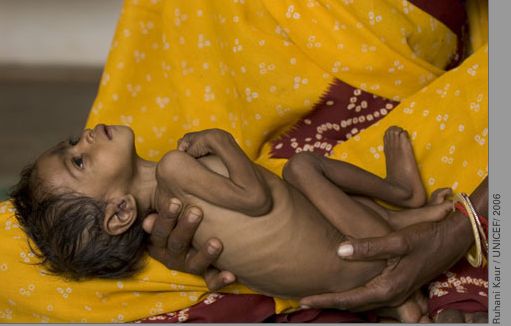Malnutrition: Social Aspects, Etiology, Health Significance And Clinical Manifest
Physical Presentations Of Malnutrition

Introduction And The Social Aspects Of Nutrition
Malnutrition results from deviations from normal nutrition. Frank clinical signs and definite biochemical abnormalities occur in gross malnutrition, but only borderline changes occur in the majority of cases.
Malnutrition may be primary when it is caused by defective intake or secondary when it results from other disease processes. In clinical practice, one seldom comes across isolated deficiencies, but one or other nutrient deficiency predominates. Malnutrition results basically from inadequate or improper food consumption. The abnormality may be quantitative, qualitative or both. In addition to poverty which is the main cause, social, cultural, agricultural and educational factors modify the form and extent of malnutrition. Diarrhea, helminthic infestations and other infections aggravate malnutrition resulting in high mortality and morbidity.
Social Aspects Of Nutrition
In addition to the nutritive values of diet, food is a part of security, social behaviour and civilization. Occurrence of malnutrition in an individual is only an index of the same disorder in the household and the community as well. So identification of an index patient, should be the starting point for further case detection and the treatment should cover the entire community.
Etiological factors:
- Inadequate supply of food due to poverty
- Ignorance of dietary principles
- Wrong practices of cooking and storage or food
- Malabsorption of nutrients.
- Parasitism
- Loss of nutrients through urine, stools, bleeding etc
- Increased demands due to pregnancy, intercurrent illness, or repeated deliveries
- Interference with metabolism
- Other environmental factors like general insanitation, intercurrent illness, overcrowding, rapid population growth, and political instability
Malnutrition In India

Clinical Presentations
Nutritional disorders often present as multiple deficiencies and only rarely as isolated entities. The most pronounced deficiency manifests clinically, the others remain subclinical. In such cases, supplementation of the missing nutrient without overall dietary correction leads to temporary improvement, but sooner or later malnutrition becomes evident. Irrespective of the type of nutritional disorder, overall dietary correction is mandatory. The presenting symptoms should be treated with additional supplementation of the deficient factor.
Care should be taken to prescribe a proper diet suitable to the patient’s cultural and economic state and should be made up of articles cheaply and freely available in the locality. Prescription of a diet unsuitable to the socio-cultural background of the patient is the most common cause for non-compliance.
In health, many nytrients are stored in the body and therefore dietary deprivation initially leads to depletion of the stores. This period is totally asymptomatic. Symptoms occur only when the deficiency is far advanced. Hence it is essential to continue nutrient therapy for at least 4 to 6 months after fully correction of the clinical condition to replenish the stores. Natural foods are more palatable, but they are slow in action and several factors influence their absorption and utilization. Therefore therapeutic preparations are employed for immediate correction and thereafter dietary measures are continued. It is absolutely essential to detect the primary cause in each case otherwise, many underlying serious diseases missed, till the condition becomes advanced beyond treatment. All cases of secondary malnutrition should be fully investigated to detect the primary causes.
© 2014 Funom Theophilus Makama







